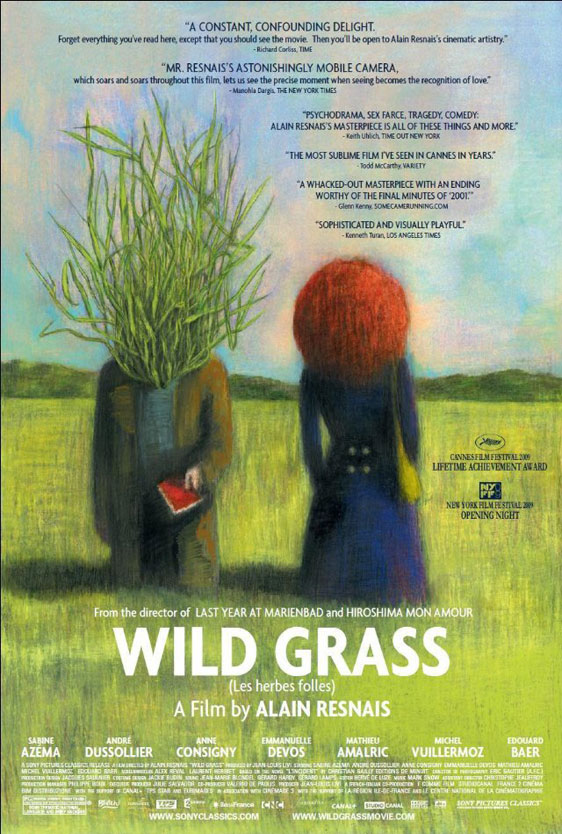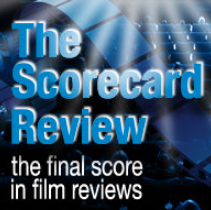 Wild Grass
Wild Grass
Directed by: Alain Resnais Cast: Andre Dussollier, Sabine Azema Running Time: 1 hr 42 mins Rating: R Release Date: July 16, 2010 (Limited)
PLOT: An older gentleman (Dussolier) starts to become obsessed with a woman (Azema) whose wallet he randomly discovered one day.
WHO'S IT FOR? An appreciation for Resnais would certainly come in handy for anyone who chooses to visually trip on some of his Wild Grass.
EXPECTATIONS: Other than the praise this movie had received at Cannes, I had little clue as to what this one would be about, or whether it would resemble any of the Resnais I had seen previously.
SCORECARD (0-10)
ACTORS:
Andre Dussolier as Georges Palet: Even in Resnais’ skewed reality, Georges seems like a real man. Dussolier carries him with a lot of anxiety, he’s constantly gritting his teeth, and treading the social waters carefully. The character’s past is hinted at, and at times confusing. Is it just us, or does this older man have a history of crime? A grave presence, but one with potential to be successful comic fodder, as he is in the third act. Score: 7
Sabine Azema as Marguerite Muir: It’s not just her bright hair that is reminiscent of Kate Winslet’s unique character Clementine from Eternal Sunshine of the Spotless Mind. She has the same free-spirited nature, though the vibrancy of her appearance is reserved mostly for her dentistry patients. The almost stalker-like attention given to her by Georges isn’t as welcome as the friendship she has towards her airplane buddies. She remains an independent woman, even when Georges’ aggressive ways offer overbearing attention. At her core, however, she is quite sweet. A lovely performance. Score: 7
TALKING: The first third of the film is told mostly in voiceover, with the characters hardly speaking themselves. The narration accurately captures the bouncy nature of the mindset, especially under duress. While reading stream of consciousness works can sometimes feel laborious, the way in which Resnais uses the style doesn’t get tiresome. If anything, it might even end too soon. Score: 7
SIGHTS: Though in a disorganized story, the cinematography can be quite beautiful. There are sequences of beautiful slow motion scattered throughout, and delightful long takes. During all of this, the film always has a striking color contrast. Score: 8
SOUNDS: The schizophrenic nature of Wild Grass is certainly present in the soundtrack, which like the story itself, bounces between drastically different styles. Fittingly, some scenes are accompanied by flighty piano jazz music, and in other instances the music can go to other extremes, such as the type of score you’d hear in a spy movie. To round up the cinematic aspect of the movie, the “20 Century Fox Fanfare” is played in at least two occasions. Score: 6
PLOT SPOILERS
BEST SCENE: With its slow-motion cinematography and intriguing voiceover, the introduction of Marguerite Muir grabs its viewers the tightest of all unique sequences in Wild Grass.
ENDING: This is the only movie ever made that will end with this line, as spoken by a little girl who has no previous scene in the movie: “When I’m a cat, will I be able to eat cat munchies?” Oh, those new wave directors!
QUESTIONS: Too many, almost to the point where I feel I shouldn't bother.
REWATCHABILITY: A second view might be able to unscramble some of Wild Grass. But a re-watch could certainly get tedious in some parts.
OVERALL
Alain Resnais’ Wild Grass has a bunch of ideas swimming through its head, and they are at first dumped onto its audience in a beautiful stream of consciousness sequence that introduces characters that will be consistent, however their mysteriousness, but the style in which they will be presented is not. After a recovered wallet leads an old man to a new fascination, the plot takes on this angle that could probably best described as “an unromantic love story.” The fascination leads to obsession, with bits of humor thrown in (a zipper problem plays a key part in the third act) and it reaches a “cinematic” rest stop of an ending. That is, until the movie takes flight in a whole different direction, crashes somewhere else, and ends with that cat munchies line. All the while, the aesthetics, not to mention the cinematography’s color palette, and the curious nature of the movie keep us intrigued for the movie’s 100 minute rambling running time.
An attempt to organize Wild Grass is similar to making the pieces of two different 1,000-piece puzzles fit together into one united dumbfounding result. For example, you have Puzzle A, which features a picture of two puppies being playful with each other, and then you have Puzzle B, which is a picture of a simple house cat, and after consulting the box, and picturing what the result of each puzzle will look like, you then proceed to dump the pieces into one big pile, and then from that point on, you’re mixing these puzzle pieces together, and while some pieces match up, some parts of this end result simply don’t. The result, which uses only ¾ of the right amount of pieces, is its own intriguing creature, but at the same time, it doesn’t really make sense. Nor does it look like much of what you may have seen before.
Yes, Resnais. You can eat cat munchies when you’re older. That is, if you haven’t already.
FINAL SCORE: 6/10
